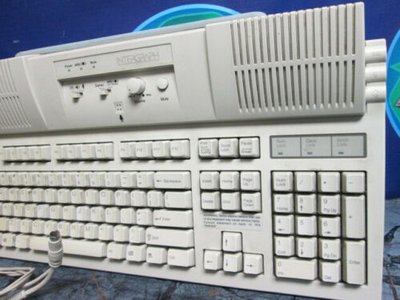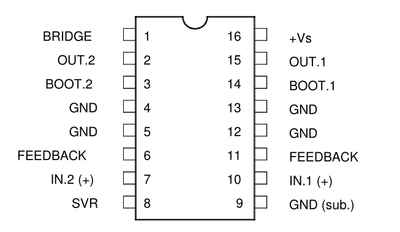First post, by Ozzuneoj
- Rank
- l33t
I picked up one of those nifty old Intergraph keyboards with the built in speakers recently and I just attempted to test it. The keyboard works fine and feels pretty decent, but there is no sound coming from the speakers at all. The switches all seem to change the lights as expected (switching it on, switching between stereo and SRS mode, hitting mute, etc). The power LED does flicker once when I turn it on... like, it'll come on and go dim briefly, then come back on and stay on. It does this pretty much every time I switch it on. There is absolutely no hiss, pop, crackle or hum of any kind coming from the speakers, even when switching on or playing with the volume control.
My ability to diagnose things like this is pretty limited, but I did a few basic things. First, I opened it up and checked it out and it looks very nice inside. It was really dusty in the key-area but in the enclosed area for the amplifier circuitry it is clean. There's no sign of any capacitor leakage, burnt\broken traces, overheated components, etc. Using my DMM I checked the speakers and they are both showing 7.6ohms, so they should be fine. I checked continuity from the three points on the 3.5mm audio input jack to the three pins at the other end inside the keyboard and it seems perfect so the cable is intact. I've tried powering it via they keyboard port (it has an adapter for this) as well as powering it with a 12v power brick that I know works and it made no difference (it also does not change the power LED dimming before turning on). The label on the back of the keyboard says it expects a 9v power brick but the actual documentation says 9-12v input and the TEA2025B can handle from 3v to 15v, so a 12v brick should be fine (and it was the only one that fit). The polarity is also correct. I also tried cleaning out the volume pot with deoxit D5 because it was really sticky sounding, almost like there was a ton of grease inside it. I'm not sure if this is intentional or not, but I figured it was possible that any grease added to make it feel smooth could have gotten into the pot eventually and stopped it from working. It now turns very smoothly and silently but there's still no sound from the speakers.
Here is a gallery of some pics I took of the internals:
https://photos.app.goo.gl/LPaiK2iWDYySutwBA
The components all appear to be good quality. The electrolytic caps are all ELNA. Some are (M) some are (S).
I got this fairly cheaply, so I'd love to fix this thing.
Other than the optional SRS circuitry (its on a separate board and is likely only used if SRS is switched on) it uses almost entirely passive components. If the TEA2025B was bad, how would I go about testing it?
Here is the datasheet for the keyboard: https://datasheet.octopart.com/RT915CTW-NMB-d … eet-7272685.pdf
And the TEA2025B amplifier it uses: https://www.mouser.com/datasheet/2/389/stmicr … 172-1204396.pdf
EDIT: I just tested the microphone on the keyboard and it works fine. I also tested the headphone output and subwoofer output and they both appear to be passing audio through from the 3.5mm input jack as expected (as long as the power switch is turned on). I wonder if that amp is toast or if some of the caps have gone totally out of spec. I've used equipment far older than this and not had these problems, but then I'm not familiar with mid-90s era ELNA capacitors.
Now for some blitting from the back buffer.

